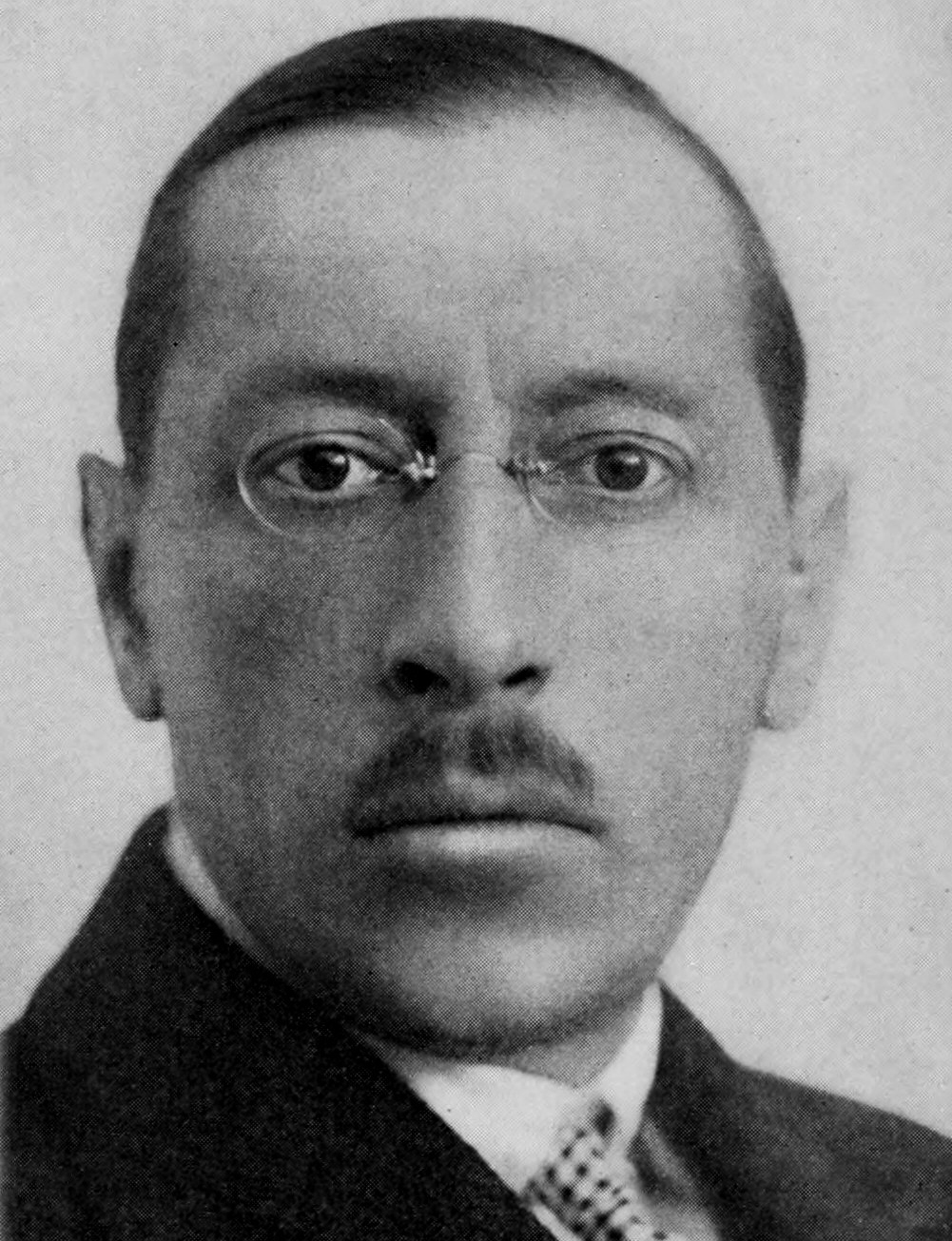Early Modernism (1895–1945)
 |
| Schoenberg's Der Rote Blick (Red Gaze), 1910 |
“In the world of concert music, dramatic innovations emerged during the first three decades of the twentieth century: the emancipation from the idea of dissonance; continuity and predictability in rhythm; polytonality; atonality and twelve-tone music. However, these all had the effect of alienating the large audience for music inherited from the nineteenth century. Despite critical acclaim for these novel strategies for writing music, the twentieth century turned its back on this new music. It embraced the world of concert music as a museum designed for the art of recreation. In this century, the performance of music from the past has held center stage...
By comparing these American composers with their counterparts in art, rather than with their predecessors in music, a new avenue of appreciation and affection can be opened up to a vital, powerful, and too often overlooked American aesthetic legacy.” – Leon Botstein
The transition from nineteenth-century Romanticism to twentieth-century "Modernism" is, perhaps, as violent an upheaval as was the transition from the Renaissance to the Baroque. By the end of the nineteenth century the increasing scale of forces used in orchestras and opera houses was fast reaching saturation level. Composers felt it necessary to find new ways to say new things. Musically, this meant that melody, harmony, rhythm and tone quality had to be reassessed, the true value in the Modern period was and still is placed on originality, innovation and variety. The defining feature of modern music is the breaking-down of all traditional conventions, seeking complete freedom in all dimensions, such as melody, rhythm, and chord progression. The convention of tonality was completely abandoned by many composers, even the very notion of what constitutes "music" was redefined.
 Just like Beethoven's 3rd Symphony changed the future of symphony composition, so did Igor Stravinky's Rite of Spring in to ballet. Up until that point, ballet was beautiful, elegant, and charming. People were used to seeing and hearing works like Swan Lake, The Nutcracker, and Sleeping Beauty. Stravinsky's Rite of Spring introduced new concepts in music, dance, and story, making at this point a complete change in the progress of music.
Just like Beethoven's 3rd Symphony changed the future of symphony composition, so did Igor Stravinky's Rite of Spring in to ballet. Up until that point, ballet was beautiful, elegant, and charming. People were used to seeing and hearing works like Swan Lake, The Nutcracker, and Sleeping Beauty. Stravinsky's Rite of Spring introduced new concepts in music, dance, and story, making at this point a complete change in the progress of music.The work's premiere on May 29th of 1913, at the Théatre des Champs-Elysées in Paris, was scandalous. As Carl Van Vechten, drama critic for the New York Sun later wrote, the unruly audience became as much a part of the performance as the dancers and musicians: Some forty of the protestants were forced out of the theater but that did not quell the disturbance. The lights in the auditorium were fully turned on but the noise continued and I remember Mlle. Piltz (the dancer portraying the sacrificial maiden) executing her strange dance of religious hysteria on a stage dimmed by the blazing light in the auditorium, seemingly to the accompaniment of the disjointed ravings of a mob of angry men and women. The subsequent coverage in the press of the ballet was resoundingly negative; the music was dismissed as mere noise and the dance as an ugly parody of traditional ballet.
In addition to the outrageous costumes, unusual choreography and bizarre story of pagan sacrifice, Stravinsky's musical innovations tested the patience of the audience to the fullest. The music itself was angular, dissonant and totally unpredictable. In the introduction, Stravinksy called for a bassoon to play higher in its range than anyone else had ever done. In fact, the instrument was virtually unrecognizable as a bassoon. When the curtain rose and the dancing began, there appeared a musical theme without a melody, only a loud, pulsating, dissonant chord with jarring, irregular accents. The audience responded to the ballet with such a din of hisses and catcalls that the performers could barely hear each other. Roman Vlad, a composer, pianist and musicologist, later wrote, “Never had an audience heard music so brutal, savage, aggressive, and apparently chaotic; it hit the public like a hurricane, like some uncontrolled primeval force.”
Despite the violence of the opening night, The Rite of Spring is considered to be a milestone in the history of ballet. It has become a regular work in many ballet companies' repertoires. The music has been used extensively, as in Disney's Fantasia. Leonard Bernstein called it the most important piece of music of the 20th century. Stravinsky’s daring and audacious music continues to influence countless composers and remains shockingly new even 100 years after its premiere.

Nenhum comentário:
Postar um comentário